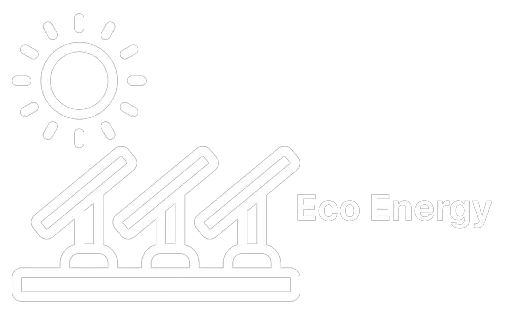The Role of Energy Benchmarking Tools in Sustainable Building Operations

For Minnesota businesses, energy costs are a major operating expense. Rising utility rates and increased sustainability expectations from tenants, investors, and regulators make it essential for building owners to better understand how their facilities consume energy. This is where energy benchmarking tools come into play.
Energy benchmarking allows property managers and business owners to measure their building’s performance, compare it against peers, and identify opportunities for cost savings. We will break down what benchmarking tools are, how they work, their benefits, and why they are essential for sustainable building operations in Minnesota.
What Are Energy Benchmarking Tools?
Energy benchmarking tools are software platforms or systems that track, analyze, and compare a building’s energy and water usage. They allow businesses to:
- Collect and organize utility data (electricity, gas, water, and steam).
- Compare energy intensity against similar buildings.
- Track performance improvements over time.
- Generate compliance reports for local benchmarking ordinances.
- Provide actionable insights for energy efficiency projects.
The most widely used benchmarking tool in the United States is ENERGY STAR Portfolio Manager, developed by the U.S. Environmental Protection Agency (EPA). Many Minnesota cities require its use for commercial benchmarking compliance.
Why Benchmarking Matters in Minnesota
Minnesota has been a leader in promoting sustainable energy practices. The state’s combination of cold winters and hot summers means commercial buildings can be among the largest energy consumers in the region. Without proper tracking, inefficiencies often go unnoticed.
Local laws make benchmarking even more important. For example:
- Minneapolis Energy Benchmarking Ordinance: Requires commercial buildings over 50,000 square feet to annually report their energy and water usage through ENERGY STAR Portfolio Manager.
- St. Paul Energy Benchmarking Program: Similar requirements for large commercial properties to disclose annual energy performance.
Failing to comply with these ordinances can result in penalties, but beyond compliance, benchmarking helps businesses uncover hidden costs and improve sustainability.
How Benchmarking Tools Work
Benchmarking tools follow a straightforward process:
- Data Collection: Collect 12+ months of utility bills (electricity, natural gas, water). Many utilities, including Xcel Energy, allow direct data uploads.
- Building Information: Enter details like square footage, occupancy type, operating hours, and equipment type.
- Performance Metrics: The tool calculates metrics such as Energy Use Intensity (EUI), greenhouse gas emissions, and ENERGY STAR score (1–100).
- Comparison: Compare performance against national averages or local building peers.
- Reporting: Generate compliance reports for city ordinances and internal sustainability goals.
For example, a commercial office in Minneapolis may discover through benchmarking that its energy use per square foot is 30% higher than similar buildings nationwide, highlighting opportunities for savings.
Benefits of Energy Benchmarking Tools
1. Reduced Utility Costs
By highlighting inefficiencies, benchmarking identifies where energy waste occurs. Minnesota businesses often find 10–20 percent savings opportunities after analyzing their data.
2. Informed Decision-Making
Benchmarking provides reliable data to support capital planning. For instance, knowing that HVAC inefficiencies are driving up energy intensity helps justify equipment upgrades.
3. Regulatory Compliance
Minneapolis and St. Paul ordinances require reporting, and benchmarking tools simplify compliance by automating data collection and generating ready-to-submit reports.
4. Improved Tenant Satisfaction
Energy-efficient buildings offer more consistent comfort, lower shared utility costs, and stronger sustainability credentials, all of which attract tenants.
5. Environmental Impact
By reducing energy use, benchmarking contributes to carbon reduction efforts, helping businesses align with Minnesota’s climate action goals.
Benchmarking Metrics That Matter
When using benchmarking tools, several key metrics guide decision-making:
- Energy Use Intensity (EUI): Expressed as energy use per square foot. Lower numbers mean better efficiency.
- ENERGY STAR Score: A percentile score from 1–100 comparing performance to similar buildings. A score above 75 qualifies for ENERGY STAR certification.
- Greenhouse Gas Emissions: Tracks carbon footprint associated with energy use.
- Water Use Intensity (WUI): Water use per square foot, critical for sustainable operations.
- Load Profiles: Patterns of when energy is consumed most, identifying peak demand issues.
These benchmarks create a performance baseline for future improvements.
Common Challenges With Benchmarking
While the benefits are clear, some businesses face challenges implementing benchmarking:
- Data Gaps: Missing utility bills or tenant-submetered data complicates reporting.
- Complex Portfolios: Managing data for multiple sites or campuses requires advanced tracking systems.
- Interpretation of Results: Raw numbers don’t always tell the full story—expert analysis is often needed.
- Staff Training: Facility managers may require training to use benchmarking tools effectively.
Partnering with consultants like Eco Energy Solutions MN LLC helps businesses overcome these obstacles by streamlining data collection, analyzing results, and offering actionable recommendations.
Benchmarking in Action: Minnesota Success Stories
Energy benchmarking has already delivered measurable results for buildings across Minneapolis and St. Paul. These real-world examples highlight how data-driven insights can translate into efficiency, savings, and sustainability.
1. Minneapolis Office Building Reduces EUI by 18%
While specific building names are not disclosed, Minneapolis maintains a public
Energy Benchmarking Results Dashboard that tracks Energy Use Intensity (EUI) reductions across properties. For example, the
Court International building achieved nearly a
40% reduction in energy use over three years through energy management system optimization and targeted improvements.
Minneapolis Energy Benchmarking – City of Minneapolis
2. Twin Cities School District Saves Over $75,000 Annually
The
City of Saint Paul’s Energy Benchmarking Program has shown measurable results across its building portfolio. While specific school district case studies are not singled out, the program overall reports a
median ENERGY STAR score of 85 and an
11% decrease in median site EUI from 2019 to 2023. These improvements reflect millions of dollars in avoided costs, with several public buildings saving
over $75,000 annually through efficiency upgrades like lighting retrofits and scheduling adjustments.
Saint Paul Energy Benchmarking – Smart Energy Decisions Case Study
3. St. Paul Retail and Commercial Properties Achieve ENERGY STAR Certification
Multiple properties in St. Paul have been recognized for earning
ENERGY STAR certification thanks to strong performance documented through benchmarking. Notable examples include
The Penfield Apartments and
Wells Fargo Place, both certified in 2020. While these are primarily residential and office buildings, they demonstrate how benchmarking paves the way for improved efficiency and higher property value across asset types, including retail centers.
City of Saint Paul Benchmarking Recognition – City of Saint Paul
These examples illustrate the tangible benefits of energy benchmarking in Minnesota—leading to lower operating costs, improved building performance, and stronger marketability for property owners.
Rebates and Incentives for Benchmarking in Minnesota
Minnesota utilities support energy benchmarking and efficiency projects through incentives such as:
- Xcel Energy Data Upload Services: Automates energy use uploads directly into Portfolio Manager.
- Efficiency Rebates: For upgrades identified through benchmarking, such as LED lighting, HVAC systems, or controls.
- Custom Programs: Rebates for projects that demonstrate measurable energy savings.
Learn more at Xcel Energy Business Rebates – https://co.my.xcelenergy.com/s/business.
FAQs About Energy Benchmarking Tools
Q1: Are energy benchmarking tools only for large buildings?
While many Minnesota ordinances apply to buildings over 50,000 square feet, smaller businesses can also use benchmarking tools to track and reduce energy costs.
Q2: What is a good ENERGY STAR score?
A score of 75 or higher indicates performance better than 75 percent of similar buildings and qualifies for ENERGY STAR certification.
Q3: How often should buildings be benchmarked?
At least annually for compliance, though quarterly reviews provide better tracking and continuous improvement opportunities.
Q4: Can benchmarking track renewable energy use?
Yes. Tools like Portfolio Manager allow tracking of on-site solar generation and renewable energy credits (RECs).
Q5: Does benchmarking require professional help?
While businesses can manage basic benchmarking themselves, consultants ensure accuracy, provide deeper insights, and guide efficiency projects.
Why Work With Eco Energy Solutions MN LLC
At Eco Energy Solutions MN LLC, we specialize in helping Minnesota businesses turn benchmarking data into real savings. Our services include:
- Setting up and managing ENERGY STAR Portfolio Manager
- Collecting and verifying utility data
- Analyzing EUI, ENERGY STAR scores, and trends
- Identifying cost-effective efficiency upgrades
- Ensuring compliance with Minneapolis and St. Paul benchmarking ordinances
By combining benchmarking with our broader energy management services, we help businesses not only measure performance but also implement long-term efficiency strategies.
Take the Next Step
If you’re ready to make your building more efficient, reduce costs, and meet Minnesota’s sustainability requirements, start with energy benchmarking tools.
Call Eco Energy Solutions MN LLC today for a consultation, or request a quote online at https://ecoenergysolutionsmn.com/contact/.
We proudly serve businesses in Minneapolis, St. Paul, New Hope, and surrounding Minnesota communities.



